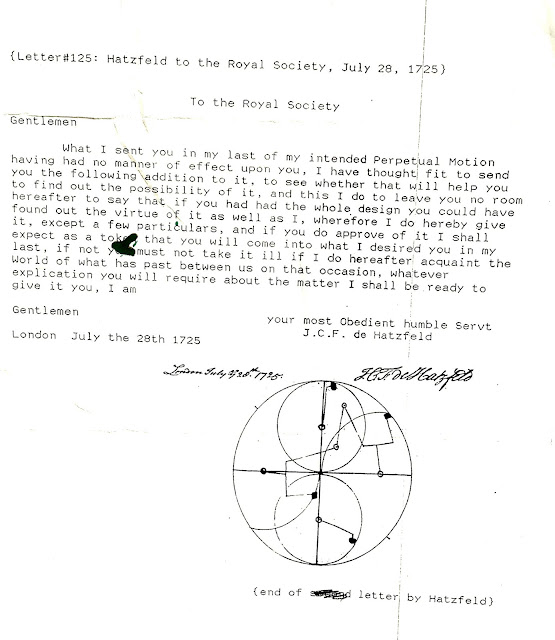There are still a lot of people who accept the view that gravity could not be the sole provider of energy to Bessler’s wheel so here’s what I believe. First, I am satisfied that Bessler’s wheel was genuine.
Sometimes it is helpful to look again at the evidence. I am fully aware that his wheel could not have been a perpetual motion machine because they are impossible. However this presumption is dependant on there being no requirement for an external energy source. I used the word ‘presumption’ because that is how it was suggested perpetual motion machines were supposed to work; no external energy source. This is also known as a closed system’.
It doesn’t take genius to see that this is impossible, no energy in = no energy out, therefore no work done. If we accept that Bessler’s wheel worked then we should consider what sources of energy were available, and to help us we can see what the inventor said about it. He told us that the weights themselves provided the perpetual motion. This can only mean that his machine benefited from the presence of gravity.
Of course we’ve all been taught that gravity is not and cannot be a source of energy. But when I read that I always think to myself, but not saying it out loud, yes not directly, but water wheels and hydroelectric stations benefit from streams of water falling from higher ground to lower ground to drive electricity generators, for example. They benefit from the presence of gravity. Bessler’s wheel benefited from the presence of gravity too.
It’s also a well-known fact that historically, virtually every would-be inventor of a pm machine ignored the suggestion that gravity could not be an energy source - that you can’t just tap into gravity and use its energy. Not just uneducated people, but highly respected men such as Leonardo da Vinci, Robert Boyle and the famous Indian mathematician, Bhaskara II, all designed mechanisms which they believed might work, even Sir Isaac Newton left a perpetual motion sketch. They weren’t put off by the idea that gravity could not be used, maybe it was never considered.
All forms of energy relate to motion, so when something is in motion it has kinetic energy, or sometimes it can have potential energy, or stored energy. Energy is often defined as the capacity to do work. Gravitational energy can do work, it’s routinely measured to assess the amount of work it has done in a particular instance, so the only reason that I can see why it is taught that gravity cannot be a source of energy is because no one has ever devised a mechanical method which allows weights to fall and continuously be raised again while rotating a wheel, apart from Bessler. It has been extensively and relentlessly argued that it is impossible, but Bessler’s evidence suggests that this is incorrect.
We can extract energy from windmills, but only if the air is moving. No wind, then no energy. Waterwheels remain stationary in still water, You cannot extract energy from gravity if gravity is not moving anything, but you can if gravity moves something and makes it fall.
So you cannot tap gravity as source of energy directly, but you can if you have a medium in between gravity and the wheel, and in Bessler’s wheel it must be the weights. Gravity makes the weights fall, causing the wheel to turn. A mechanism which can allow itself to fall, under the influence of gravity, and still manage to reset the fallen weights must be possible, and it must be Bessler’s solution, because the solution requires it to be so.
I’ve been writing the same argument for at least ten years, see my other web sites, and still few get it or accept it and yet it is pure logic. Bessler got it and so can we.
JC









